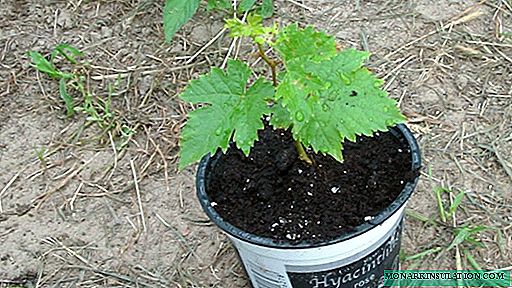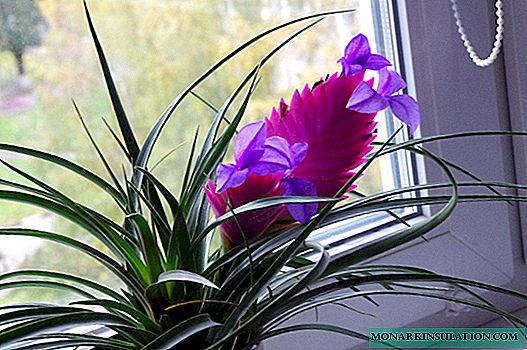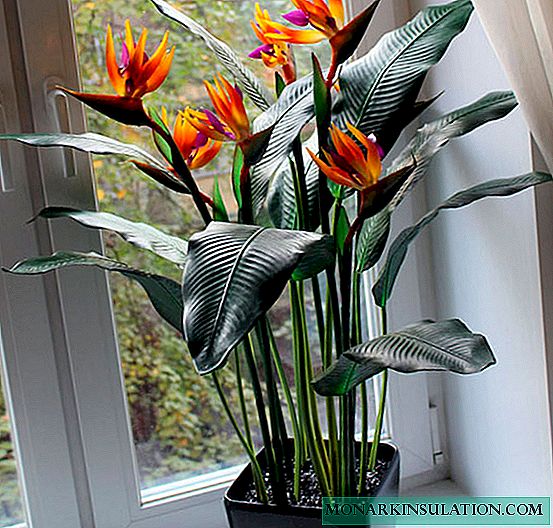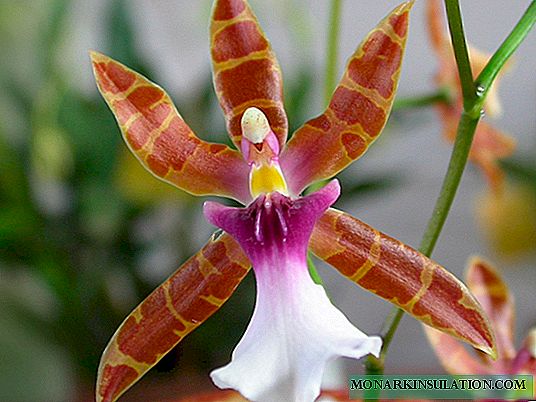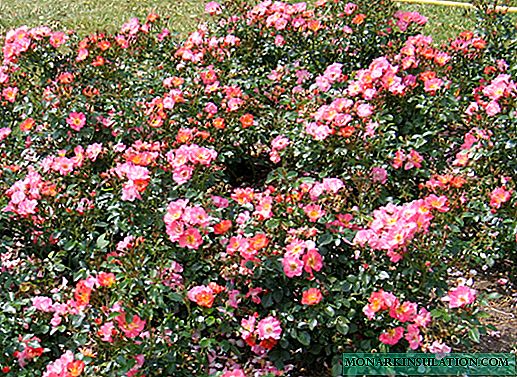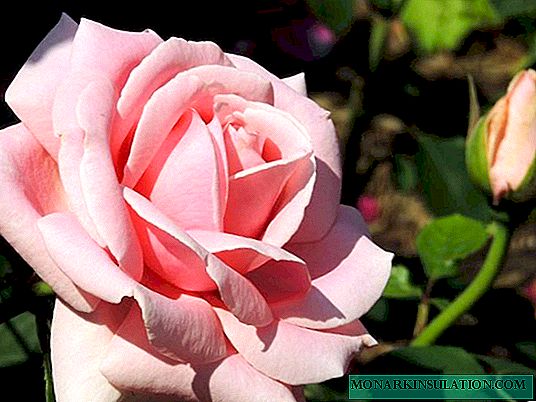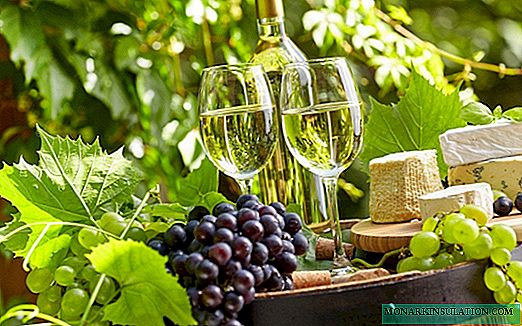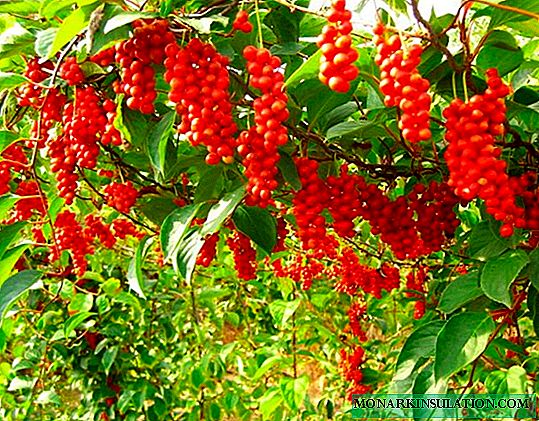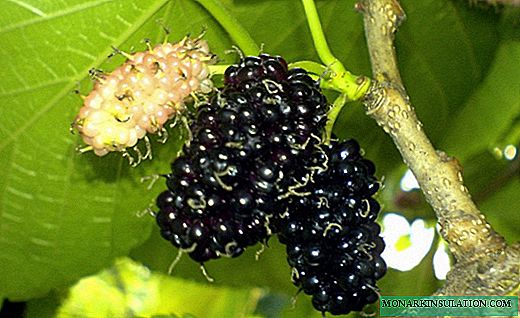Mulberry (morus) is a deciduous tree from the Mulberry family. It is also known as the mulberry tree and the mulberry tree. The plant is successfully cultivated in temperate climates and subtropics. The natural habitat is the expanses of North America, Africa and Asia. The plant gained its popularity due to tasty and juicy berries. It is also used for site decoration, treatment and for industrial purposes. And, of course, it is the mulberry foliage that serves as the feed for the silkworm - the “producer" of silk.

Plant description
Mulberry - deciduous tree with a spreading crown. Usually it grows no more than 10-15 m in height. The maximum annual growth is achieved at a young age. Among the mulberries there are real centenarians. Individual specimens grow for 200-500 years.
Young branches are covered with a dark brown smooth bark, which, with age, is much cracked and peeled off. On the shoots, next petiolate leaves of a heart-shaped or ovoid form grow. Their shiny surface is dotted with a net of relief, lighter veins and painted in dark green. The edges of the foliage are jagged, and the flip side is lighter, matte. The sheet length is 7-15 cm.
In mid-spring, mulberries bloom with barely noticeable, unattractive buds with long stamens. They are gathered in dense short spikelets and resemble fluffy brushes hanging on flexible legs. Mulberry can be a monoecious and dioecious plant. The dioecious species have separately male, barren trees (mulberry) and female.














Pollination occurs with the help of insects and wind. After it, the fruits of a complex structure ripen. On a short branch there are many juicy drupes pressed against each other. The total length of the fruit is 2-5 cm. Its color is purple-black, red or creamy white. The fruits are edible, they have a sweet and sour taste and a rather intense, pleasant aroma. The size of the leaves and fruits of the mulberry is highly dependent on the climate and soil fertility. In the south, they are an order of magnitude larger than in the middle lane (for example, in the Moscow region).
Mulberry species
Concerning the species classification of botany, there is debate. Various sources indicate that the genus contains 17-200 species.
Black mulberry (m. Negro). The tree grows 10-13 m from the ground. Its dense crown is covered with large ovoid leaves 10-20 cm long and 6-10 cm wide. Dark purple drupes are sweet and oblong - about 2-3 cm long. Varieties:
- Kherson - frost-resistant, low tree with large (3.5 cm), sweet berries;
- Black Baroness - a frost-resistant tree is already covered in June with large, sweet berries;
- Dark-skinned girl - a tall, sprawling tree gives black sweet and sour berries;
- Staromoskovskaya - sweet black-violet fruits 3 cm in size ripen on a tall tree with a spherical crown.

White mulberry (m. Alba). A sprawling, tall tree is covered with gray-brown bark. On young branches, wide ovoid or palmate leaves with serrated edges grow. The length of the leaves is 5-15 cm. The fruitful shoots are shortened relative to the vegetative ones. These dioecious plants bloom in April-May, and bear fruit in May-June. Fruits (multi-species) are cylindrical in shape and have white or pink color. Their length reaches 4 cm. The taste is more watery, sugary-sweet. Varieties:
- Golden - shoots and foliage in spring are painted in golden color;
- White honey - a high spreading tree gives a large crop of snow-white sugar fruits about 3 cm long;
- Victoria - a short tree gives sweet, juicy berries about 5 cm in length;
- Weeping mulberry - a decorative variety with flexible, drooping lashes grows to 5 m.

Red mulberry (m. Rubra). The view is resistant to frost. His homeland is North America. The plant is not large in size, but it is quite sprawling. Heart-shaped or lobed leaves 7-14 cm long and 6-12 cm wide have an asymmetric shape. They are painted bright green. In mid-summer, a crop of dark purple very sweet berries ripens to 2-3 cm in length. Outwardly, the fruits of this particular type are similar to blackberries.

Breeding methods
Mulberry propagates quite simply, so when growing from gardeners, there are no difficulties. You can use seed and vegetative methods.
For seed propagation, freshly harvested, peeled and dried seeds are used. Crops are produced in autumn or spring immediately in open ground. All seeds need stratification. With autumn sowing, it will take place in vivo, in spring it will be necessary to pre-seed the seeds for 4-6 weeks in the refrigerator. Before planting, the seeds are treated with a stimulant for several hours (Zircon, Epin). For sowing, choose an open, sunny place. Make grooves with a depth of 3-5 cm, in which planting material is most rarely placed. The bed is covered with earth and mulched with a thick layer. When the soil warms up, shoots will appear. Caring for them involves regular weeding, watering and fertilizer. In mid-autumn, seedlings will grow enough for the first transplant with a distance of 3-5 m. This will avoid tangling the roots. Fruiting occurs after 5-6 years.

Since varietal characters are not preserved during seed propagation, vegetative propagation methods are more popular:
- Rooting cuttings. In June-July, green shoots are cut 15-20 cm long with 2-3 leaves. Planting is carried out in the greenhouse. Twigs are placed diagonally to a depth of about 3 cm. 1-2 leaves with a half-cut sheet plate are left on the cuttings. The key to good rooting is high humidity. Ideally, if there is a sprayer in the greenhouse that creates an aqueous suspension (fog). By September, developed roots will appear and shoots will begin to grow. Landing in the open ground is planned for next spring.
- Root offspring. Each tree periodically gives basal shoots. It can be used for reproduction. A developed sprout from a height of 0.5 m in the middle of spring is dug up, trying not to damage the roots, and planted in a new place. To develop faster, the branches are shortened by a third.
- Vaccinations. Often decorative varietal plants are grafted onto a stock obtained from seedlings. To do this, all shoots are removed on the rootstock, and oblique sections are made on the scion with 2 buds. They are combined and fixed with a special tape. The splicing process usually ends within 1-2 months. After that, the tape is removed. In the future, it is important to cut off all the lower branches that grow out of the stock. The method allows you to collect several different varieties on one plant, forming the so-called "melange harvest."

Landing and care
It is better to plan the planting of mulberry in the first half of autumn, then it will have time to adapt to a new place, and after wintering it will actively start growing. Some practice spring planting before sap flow. When buying seedlings in nurseries, preference should be given to plants aged 4 years. If they have already bore fruit, it is easier to decide on a male or female specimen.
Mulberry is a thermophilic and photophilous plant, but it needs good protection against cold drafts. The soil should be quite loose and fertile. Saline, sandy or swampy soil is not suitable, as is the proximity of groundwater.
2-3 weeks before planting, they dig a hole with a depth and width of 50 cm. Rotten manure or compost with superphosphate is immediately introduced into poor soil. A layer of ordinary earth is poured over the fertilizer so as not to burn the roots. When planting with roots, the old earthen lump is crushed, and the voids are filled with fresh soil. Upon completion of work, 2 buckets of water are poured under the tree, and then the surface is mulched. Young, thin seedlings are tied.

In the future, care for mulberries comes down to loosening, watering and fertilizing. More often it is necessary to water the trees during flowering and fruiting, but here it is important to know the measure, otherwise the berries will be too watery. Since mid-summer, watering is needed only with prolonged drought.
In April-June, 1-2 times, mulberries are fertilized with nitrogen-containing fertilizers. In the second half of summer, compositions with a high content of potassium and phosphorus are preferred.
The barreled circle is loosened from time to time to the depth of a bayonet shovel, and weeds are also removed.
An important role is played by mulberry pruning. In the spring, frozen broken branches are removed. If the plants are planted for harvesting, it is recommended to form them in the form of a bush or a short tree, then picking berries will be easier. Mulberry tolerates pruning very well and quickly recovers, so do not be afraid to remove excess. From time to time, the crown is thinned out and rejuvenated, completely removing 1-2 old branches and up to a third of the remaining shoots. With autumn pruning, dry, old, as well as diseased and broken branches are removed. In the same period, too young, not matured shoots should be removed.

Mulberry resists plant diseases well. But when planting in a too damp place, it can suffer from powdery mildew, brown spotting, bacteriosis, and small-leaved curls. Often a mulberry mushroom develops on it. The best salvation will be treatment with fungicides (Silite, copper sulfate, Cytoflavin).
Periodically, the tree is attacked by insects (mulberry moth, spider mite, white American butterfly). Insecticides will help to cope with them, and the treatments are carried out regularly for preventive purposes from early spring.
Benefits and contraindications
Fruits, leaves and young shoots of mulberry contain a large number of biologically active substances:
- vitamins (A, C, E, K and group B);
- macrocells (P, Mg, Ca, K, Na);
- trace elements (Fe, Cu, Zn, Se, Mn);
- antioxidants.

The use of fresh berries helps to normalize all processes in the body. They have a beneficial effect on the circulatory system, contribute to the outflow of fluid, increase blood pressure and sugar. In order to preserve the berries longer, they are dried or frozen, fermented into wine and ground with sugar. The effect of the fruits of the same tree on the digestive tract is twofold. Unripe berries strengthen the stool, and ripe and juicy - contribute to its liquefaction. A decoction of berries calms, helps to cope with stress and insomnia. He also restores the body after serious physical exertion.
Use not only fruits, but also leaves and bark. They are harvested for future use, and then infusions and decoctions are made. They have a good expectorant effect. Unlike berries, leaves and twigs lower blood sugar and lower blood pressure.
As such, mulberry does not have contraindications, however, it can harm people prone to allergies. Excessive consumption of berries leads to diarrhea.

